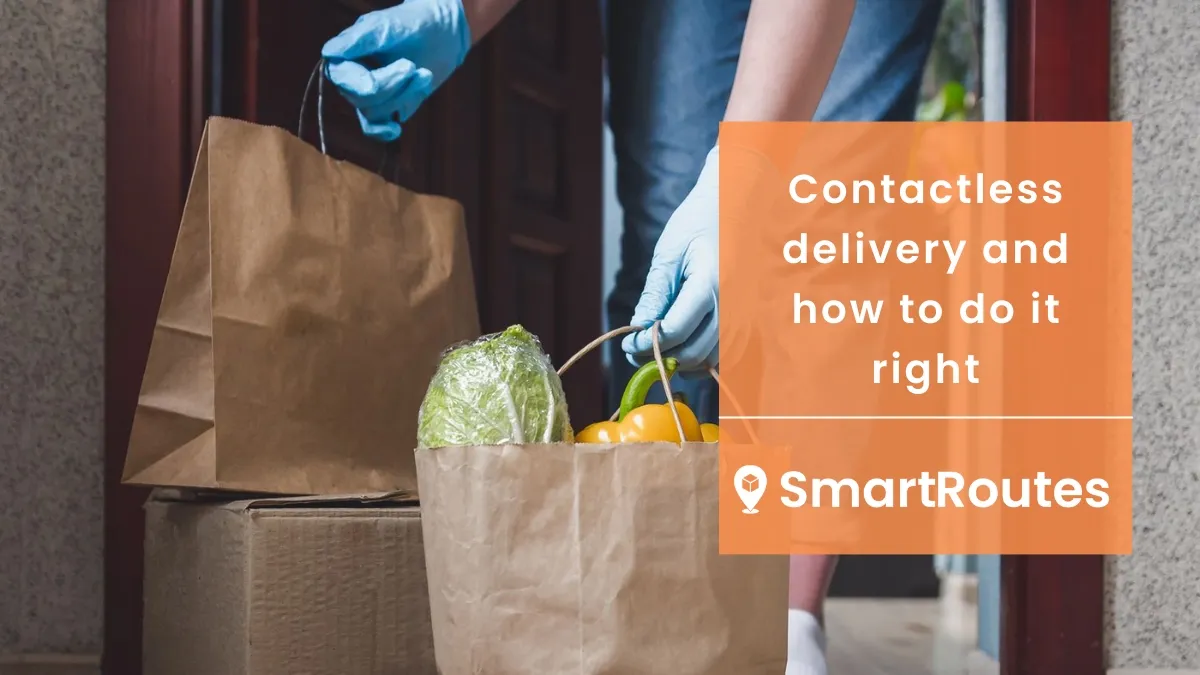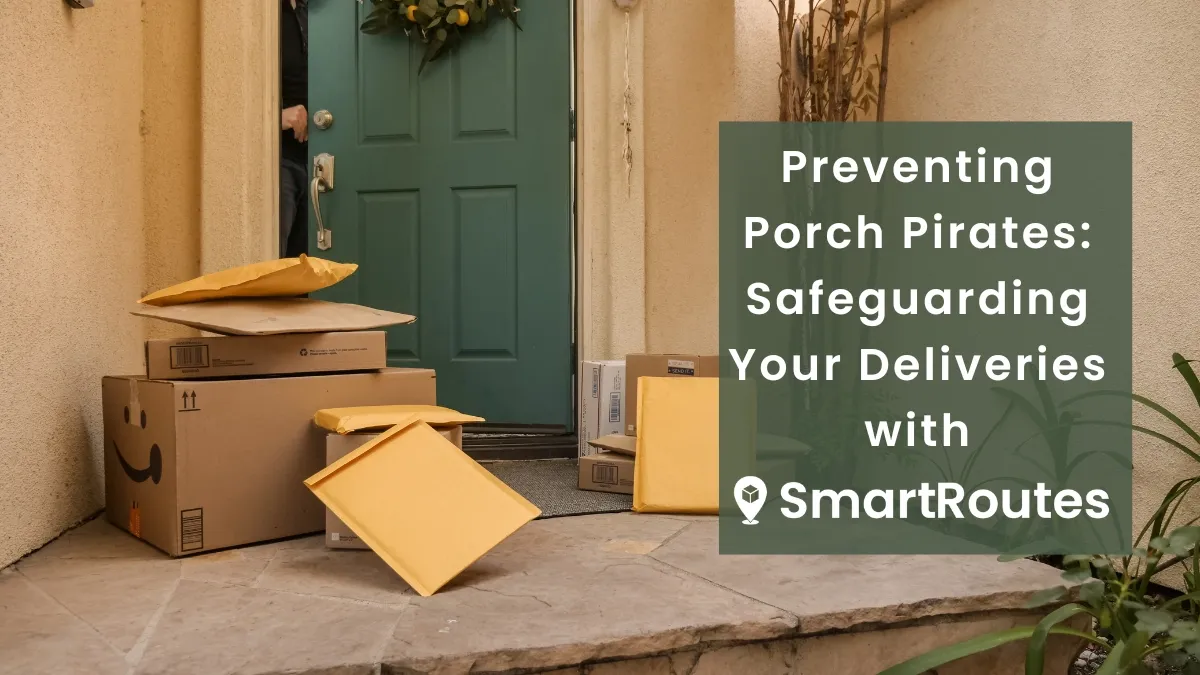Must-Have Proof of Delivery Templates for Delivery Teams
Explore the importance of proof of delivery and download customizable proof of delivery templates for your business.
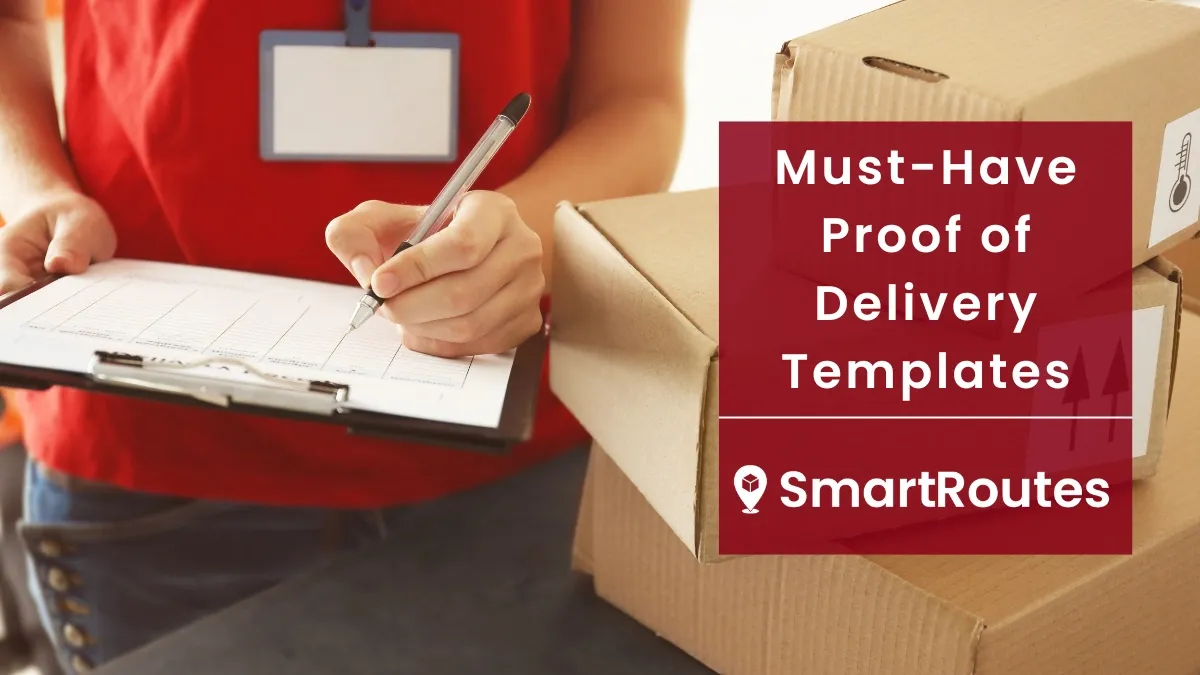
Ensuring that deliveries are made accurately and on time is crucial.
One key aspect of this is capturing proof of delivery. Although proof of delivery is not a legal requirement, it is essential for businesses that handle deliveries. This document, often in the form of a delivery signature form, serves as a confirmation that an order has been successfully delivered to the customer, acting as a vital tool for various operational needs.
Whether captured on paper or digitally, proof of delivery acts as a receipt that can significantly aid in resolving disputes.
In this blog, we will explore the different types of proof of delivery, from traditional paper-based methods to modern digital solutions. We will discuss the benefits and limitations of each approach, helping you understand which method might be best suited for your business needs. Plus, we have included some handy templates that are FREE for you to download, making it easier than ever to implement an effective proof of delivery system in your operations. Let's dive in!
The Main Reasons to Capture Proof of Delivery
What is Included in Proof of Delivery Templates?
Best Proof of Delivery Templates
What is Proof of Delivery?
Proof of delivery (POD) is a crucial record confirming that a delivery has been completed successfully, typically captured using a delivery signature form or other documentation. This documentation is beneficial for both businesses and customers in several significant ways:
For the Business
- Track Record for Successful Deliveries: Proof of delivery acts as an official record for each completed delivery, providing a clear history of transactions. This record-keeping is vital for tracking performance, auditing delivery operations, and improving logistics efficiency.
- Evidence in Case of Disputes: Having proof of delivery is essential when disputes arise. Whether the dispute concerns the condition of the order upon receipt or questions about whether the delivery was made at all, POD provides concrete evidence. This helps in quickly resolving issues, thereby maintaining customer trust and satisfaction.
- Operational Accountability: With POD, businesses can ensure that their delivery personnel are accountable for each delivery. It helps in monitoring and managing the workforce, ensuring that deliveries are executed as per the company's standards and procedures.
For the Customer
- Reporting Issues with the Order: Customers can use proof of delivery to report any issues with their orders, such as damages, incorrect items, or missing parts. Having a documented delivery confirmation makes it easier for customers to raise concerns and for businesses to address them promptly and effectively.
- Verifying Delivery Location: POD is especially useful when the recipient is not present at the time of delivery. It allows customers to verify where the delivery was left, whether it was placed in a designated safe place, left with a neighbor, or returned to a depot. This feature provides peace of mind and reduces the chances of lost or misplaced deliveries.
- Convenient Record Keeping: Customers benefit from having a record of their deliveries, which can be useful for future reference, especially for high-value or critical items. It also helps in tracking their orders, ensuring they receive what they have paid for.
Types of Proof of Delivery
Paper POD:
The traditional method uses pen and paper, typically on a clipboard. The order details are pre-filled or completed by the driver. Upon delivery, the customer signs the document. However, this method has several drawbacks:
- Admin teams cannot view PODs in real-time.
- Reviewing paper PODs during a dispute can be time-consuming.
- Paper documents can be easily damaged by the elements.
- Not suitable for contactless delivery.
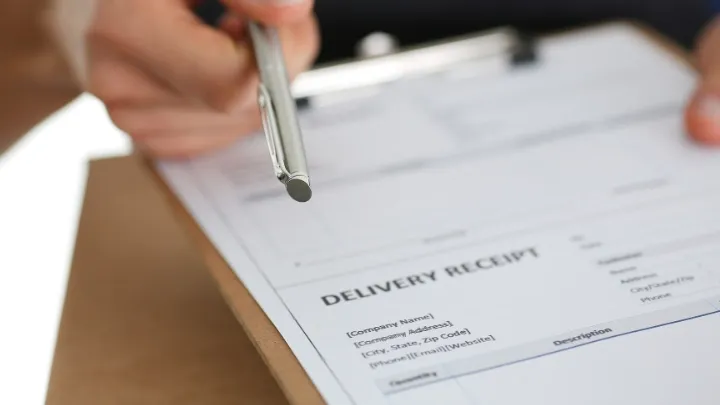
Digital POD:
Digital methods are more efficient for dispute resolution. If a customer claims non-receipt, finding a paper signature can take time, whereas digital records are easily accessible. Here are a few ways to capture electronic proof of delivery:
- eSignature: Customers sign using a finger or stylus on the driver’s device, with order information automatically filled in.
- Photo: Drivers take one or more photos via their device, automatically accessible by admin staff for quick dispute resolution.
- Scanning: Orders scanned on and off the delivery vehicle act as a form of POD.
- Geotag: The location and timestamp of the delivery are recorded by the proof of delivery app, providing precise delivery data.
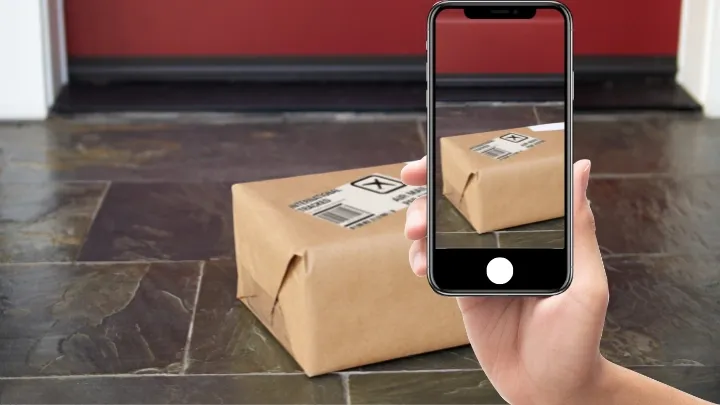
The Main Reasons to Capture Proof of Delivery
Capturing proof of delivery (POD) is a crucial practice for any business involved in delivering goods or services. It offers multiple benefits that can significantly enhance operational efficiency and customer satisfaction. Here are the main reasons why capturing proof of delivery is essential:
Dispute Resolution
Disputes are an inevitable part of the delivery process, whether they concern the non-receipt of goods, delivery to the wrong address, or damages incurred during transit. Proof of delivery provides a documented trail that can quickly clarify these situations. By having clear, irrefutable evidence, businesses can resolve disputes efficiently, reducing the time and resources spent on such issues.
This documentation includes signatures, photos, timestamps, and location data, all of which can be used to verify that the delivery was completed as per the customer's request. This reduces ambiguity and ensures that any claims or disputes are handled based on factual evidence.
Delivery Accuracy
Capturing proof of delivery helps in maintaining high delivery accuracy. It ensures that the correct items are delivered to the right address, minimizing errors and misunderstandings. Each delivery record can be cross-checked with the order details to confirm that everything matches.
By using digital POD methods, businesses can automate the process, reducing human error. For example, barcode scanning and GPS tracking can confirm that the right package is delivered to the right location. This level of accuracy is particularly crucial for businesses dealing with high-value or perishable items where mistakes can be costly.
Detailed records of each delivery allow businesses to track their performance over time. Analyzing this data can help identify patterns or recurring issues, such as frequent delivery delays in specific areas or with certain drivers. Addressing these issues proactively can lead to overall improvements in the delivery process.
Enhanced Customer Experience
Customers appreciate transparency and knowing that their orders are being handled with care. Proof of delivery provides them with visibility into their order's journey, from dispatch to receipt. This transparency builds confidence and trust in the business, providing them with a great delivery experience.
Features such as real-time tracking, delivery notifications, and electronic signatures give customers peace of mind. They can see exactly when and where their order was delivered, who signed for it, and even view photos of the delivery location. This level of detail reassures customers that their order has been successfully completed.
Having access to detailed proof of delivery records allows customer service teams to respond to inquiries quickly and accurately. When a customer contacts support with a question or issue about their delivery, the team can immediately pull up the relevant POD details and provide informed assistance.
What is Included in Proof of Delivery Templates?
A comprehensive proof of delivery (POD) template, or delivery signature form, ensures that all relevant information is captured accurately and efficiently. This documentation helps businesses maintain records, resolve disputes, and enhance overall delivery operations. A typical POD template includes the following details:
- Seller Information: This includes the company name, telephone number, business address, and email address.
- Order Information: This includes the reference or order number and order line items. The reference or order number is a unique identifier for the order, crucial for tracking and referencing the specific transaction. Order line items list each product, its quantity, and any relevant specifications or variations (e.g., size, color).
- Delivery Address: This specifies where the order was delivered, including the street address, apartment or suite number, city, state, and ZIP code.
- Billing Information: This includes details related to the billing for the order, such as the billing address and payment method used. This section may contain the billing name, address, and any relevant payment details.
- Date and Time of Delivery: This indicates when the delivery was completed. The exact date and time provide a timestamp essential for tracking delivery timelines and offer a record for both the business and the customer.
- Signature: This section is for the recipient’s confirmation. It can be a physical signature for paper PODs or an electronic signature for digital PODs.
Best Proof of Delivery Templates
Proof of delivery templates can be created in various formats like Microsoft Word or PDF, making them versatile and easy to use for businesses of all sizes. Below are some customizable templates for your company, designed to suit different types of delivery needs:
1. Basic Proof of Delivery Template
A straightforward delivery receipt template that allows you to quickly enter essential details such as descriptions, quantities, invoice numbers, and seller’s contact details. This template is perfect for general deliveries and includes:
- Order Breakdown: Detailed item descriptions, including quantities ordered and delivered, and their respective prices. This breakdown ensures that both the business and the customer have a clear understanding of what was included in the delivery.
- Seller Information: Space to input the company name, contact number, address, and email, ensuring that the recipient knows exactly who sent the delivery and how to contact them if necessary.
- Recipient Signature: A section for the recipient to sign, confirming receipt of the order.
2. Proof of Delivery Template for Bulk Orders
This template is ideal for B2B and wholesale deliveries, where large quantities and multiple items are often involved. It is specifically designed to handle the complexities of bulk deliveries and includes:
- Order Details: Sections to indicate the quality, content, and weight of bulk order packages. This ensures that all critical aspects of the delivery are documented, which is essential for large shipments.
- Consignment Information: Fields for detailed information about the consignment, including shipment date, delivery address, and any special instructions or notes that may be relevant for handling bulk items.
- Signature Section: A dedicated area for the recipient’s signature to confirm the quantity and quality of the order upon delivery. This is crucial for maintaining transparency and ensuring that the delivered goods meet the expected standards.
- Company and Contact Information: Space to include the sender’s business name, address, contact number, and email, facilitating easy communication in case of any issues or follow-up requirements.
Automate Proof of Delivery with SmartRoutes
Automating proof of delivery is a game-changer for businesses looking to enhance their delivery operations. SmartRoutes provides a seamless solution that allows drivers to capture proof of delivery directly via their mobile phones, incorporating essential features such as eSignatures, photos, scanning, and geotagging. These digital records are securely stored in the cloud, ensuring easy access and swift retrieval in case of disputes.
By eliminating manual paperwork and reducing the likelihood of errors, businesses can focus on delivering excellent service. Real-time updates and accurate documentation improve transparency and build customer trust, as clients appreciate knowing the status and details of their deliveries. In the event of any issues, having a searchable database of delivery records ensures that disputes can be resolved quickly and effectively, further enhancing customer satisfaction.
Get started with SmartRoutes by signing up for free today.
Frequently asked questions
1. What is proof of delivery (POD) and why is it important?
Proof of delivery (POD) is a record confirming that a delivery has been completed successfully. It is important because it provides documented evidence that the delivery was made, helping to resolve disputes, improve delivery accuracy, and enhance customer satisfaction by offering transparency and accountability.
2. How can I create a proof of delivery template for my business?
Creating a proof of delivery template for your business is relatively simple. You can use software like Microsoft Word or Excel to design a template that includes essential details such as seller information, order details, delivery address, billing information, date and time of delivery, and recipient signature. Alternatively, there are online tools and templates available that you can customize to fit your specific requirements.
3. What information should be included in a proof of delivery template?
A comprehensive proof of delivery template typically includes seller information (company name, contact details), order information (reference or order number, item descriptions, quantities), delivery address, billing information, date and time of delivery, and recipient signature. Including these details ensures that all relevant information is captured accurately and can be used to verify the completion of the delivery.
If you enjoyed this blog, you might also be interested in:
